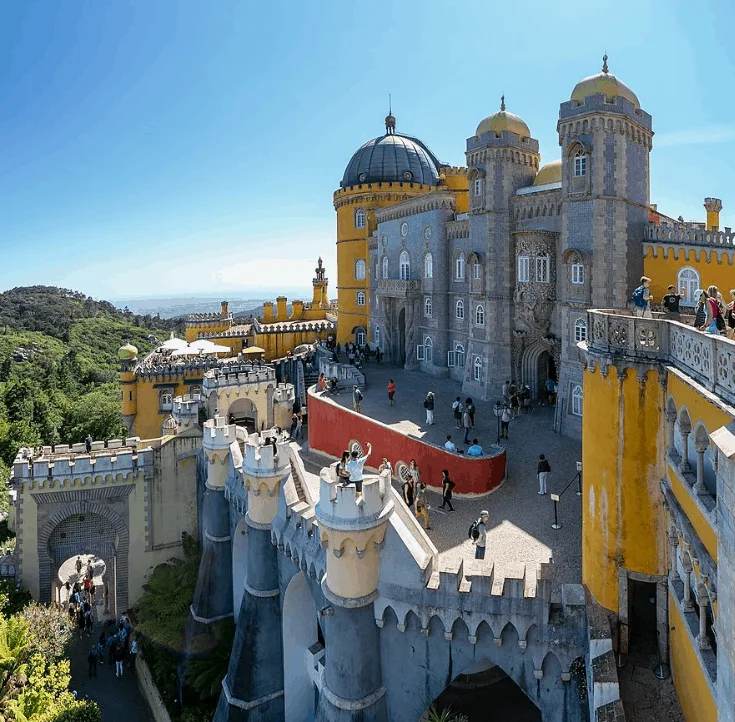It’s one of the most romantic and magnificent castles you’ll ever come across.
In this post, you’ll discover the ultimate list of facts about Pena Palace, an incredible landmark in Portugal.
1. It’s the ultimate expression of Romanticism
There’s something special about Pena Palace. This Romantic building appears to come straight out of a fairy-tale story. Except, it’s a very real palace which wasn’t just built by a Portuguese King in the 19th-century, but also used by the royal family.
The palace has been described as the ultimate architectural expression of Neo-Romanticism, a movement in various forms of art that gained ground halfway through the 19th century and which incorporated various elements from the era of Romanticism.
Who can deny that this palace looks wonderful, right?
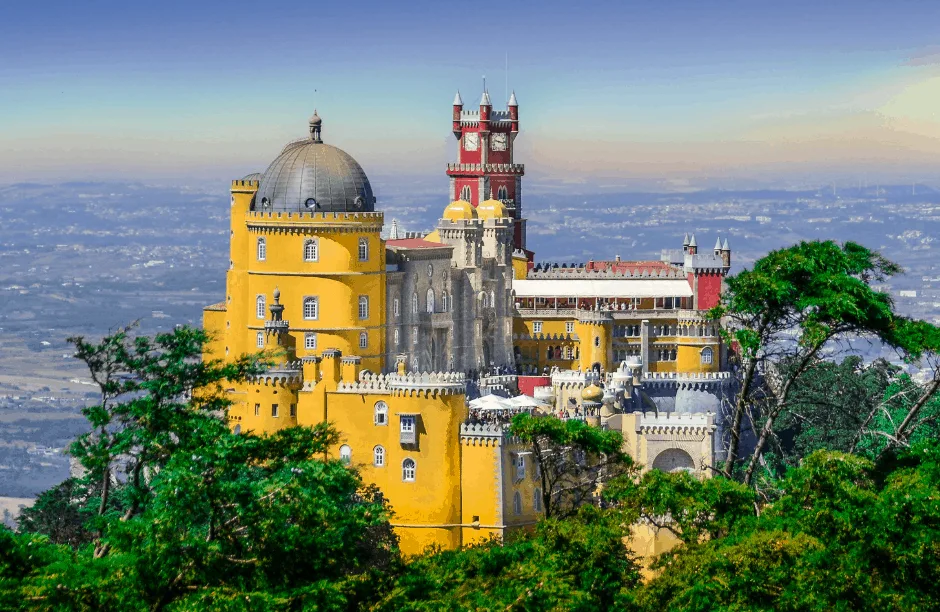
2. It’s located on the Portuguese Riviera
Apart from its obvious architectural elegance, the location of the palace makes it all the more amazing. It’s was built on top of a hill on the Portuguese Riviera and is located in São Pedro de Penaferrim, part of the municipality of Sintra.
The area that the palace was built on consists mainly of rock, which made construction much easier.
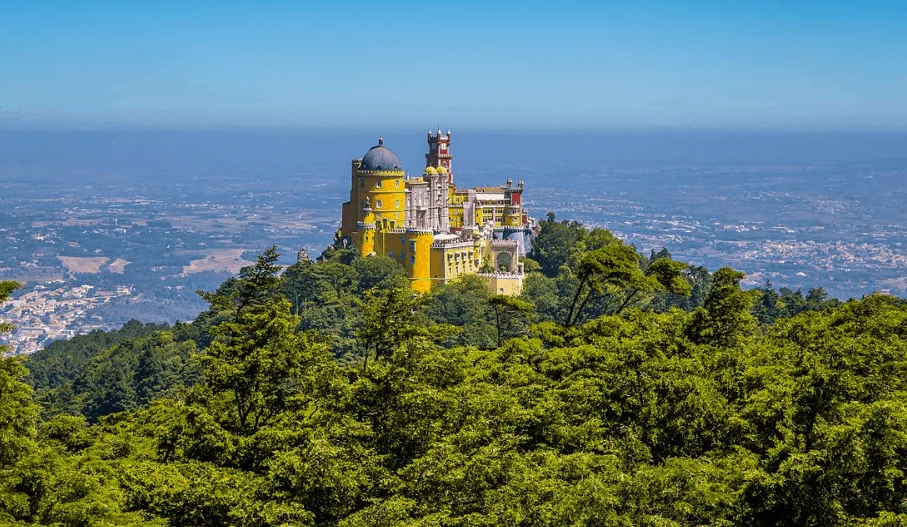
3. You can see it from Lisbon on a clear day
The mountain range is called the “Sintra Mountains” in the west of Portugal. Pena Palace is located just a few kilometers outside of the metropolitan area of Lisbon, the capital of Portugal.
One of the most interesting facts about Pena Palace is that it can be seen from just about any part of the Lisbon Metropolitan area on a clear day!
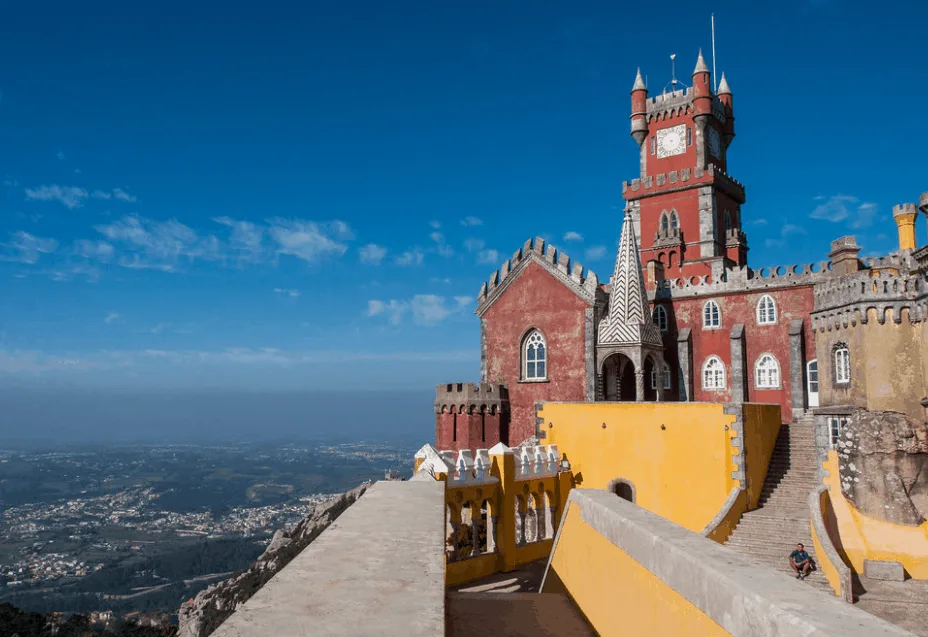
4. A chapel stood on its location in the Middle Ages
The first structure that was ever built on this location was a small chapel, which was constructed during the Middle Ages. This chapel was dedicated to “Our Lady of Pena“
This chapel was constructed after an apparition of the Virgin Mary and parts of the chapel have been preserved and incorporated in the palace.
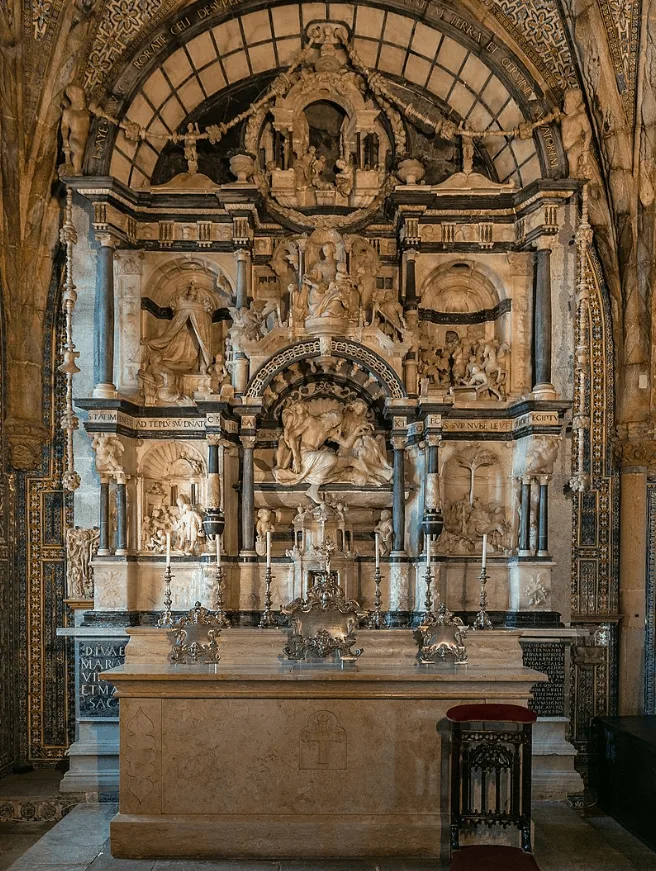
5. It was the home of a small group of monks for centuries
King Manuel I of Portugal, who ruled between 1495 and 1521, commissioned the construction of a monastery to accompany the chapel on the location.
This monastery was dedicated to the Order of Saint Jerome, also referred to as the “Hieronymites.” For multiple centuries, the monastery was inhabited by up to 18 monks and was a quiet place for worship.
Similar to the chapel, the remains of the Pena Convent have been included in the construction of the palace so they can still be visited today.
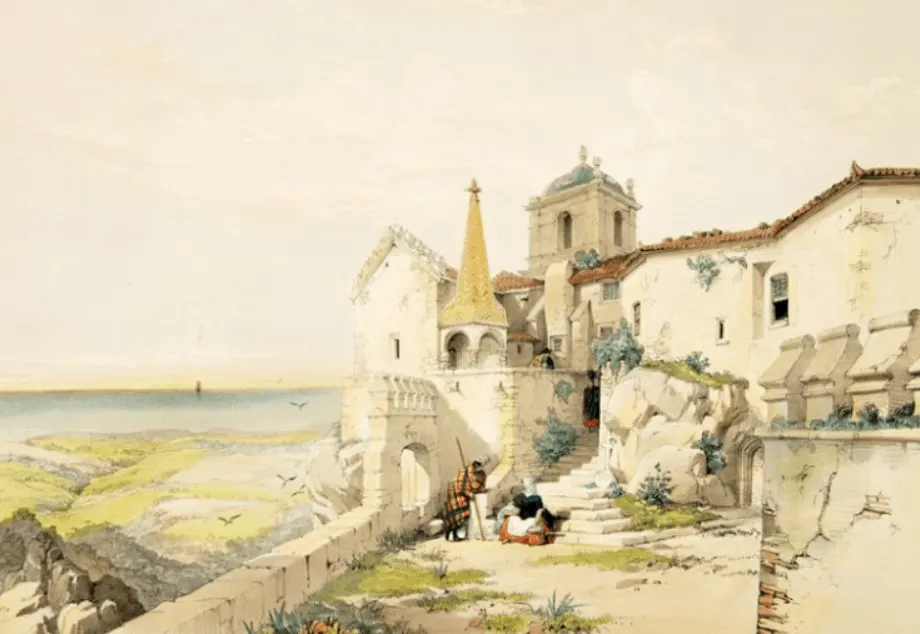
6. The monastery was destroyed by the 1755 Lisbon Earthquake
What you can see in the drawing above are the ruins of the old monastery. It lay in ruins because of an event that basically flattened the entire city of Lisbon, referred to as the 1755 Lisbon Earthquake. Only the chapel didn’t have any significant damage after the earthquake.
A monument was constructed in the century following the earthquake called the Rua Augusta Arch. This monument was constructed to commemorate the rebuilding of the city.
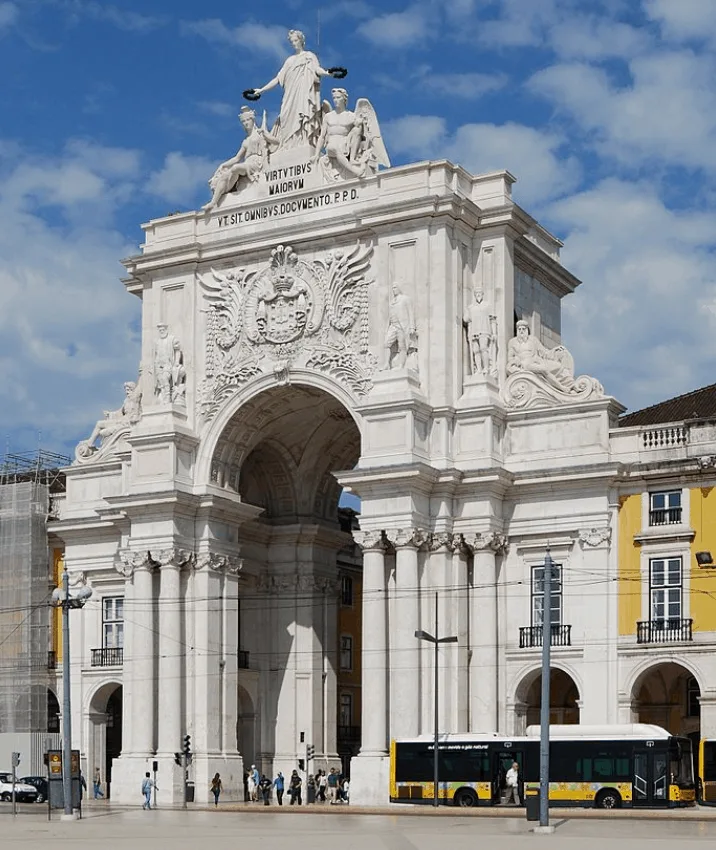
7. King Ferdinand purchased the damaged monastery in 1838
The palace lay in ruins since the 1755 Earthquake and wasn’t rebuilt. It wasn’t until the year 1838 that things moved forward as King Consort Ferdinand II bought a lot of land in the area, including the ruins of the monastery.
He liked the area so much that he decided to build a summer residence for the royal family of Portugal. This was to become the Pena Palace we know today and the construction of this amazing building started in the year 1842.
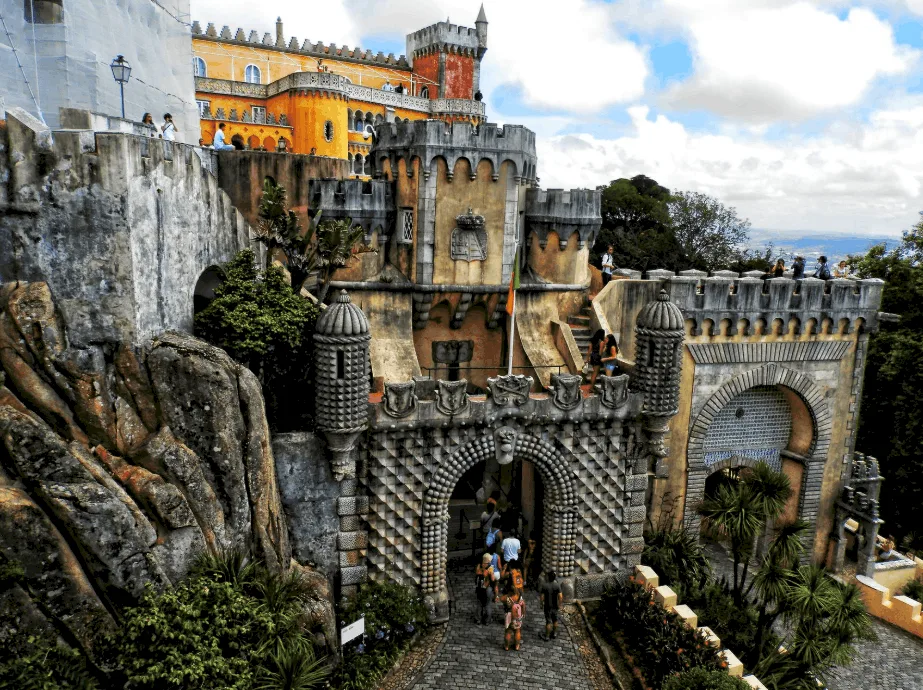
8. Pena Palace was built by an amateur German architect
One of the most remarkable facts about Pena Palace is that it was built by a German amateur architect named Wilhelm Ludwig von Eschwege (1777 – 1855).
This man was originally a mineralogist and engineer of German mines and somehow managed to wiggle his way into the Portuguese royal court, earning numerous commissions in Portugal and Brazil in the process.
One thing he had going for him was that he had traveled a lot and seen a lot of castles in his home country and other places in Europe. Therefore, he managed to use this as inspiration to create one of the most amazing Romantic-style buildings ever created.
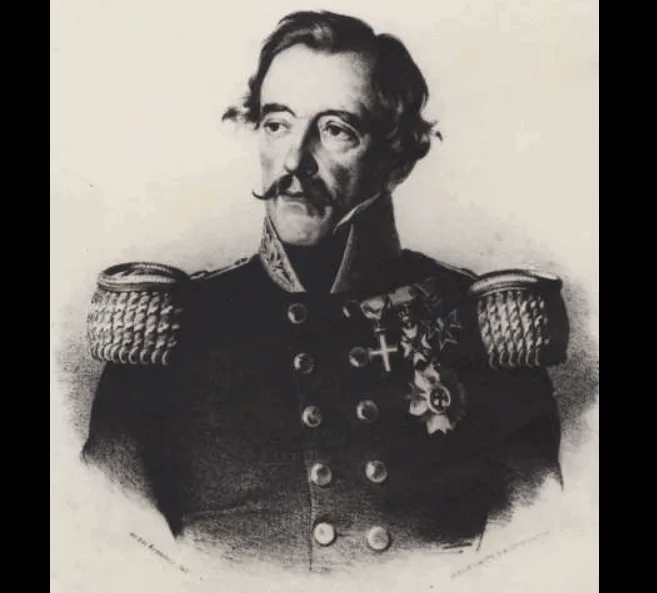
9. Numerous architectural styles were used in its design
The construction of Pena Palace started in 1842 and by 1847, much of the palace was completed. It wasn’t until the year 1854 that all the interior and all the decorations were completed as well.
King Ferdinand and his wife, Queen Maria II, had a large hand in the design and asked the German architect to incorporate multiple different architectural styles and elements. These include vault arches, Medieval and Islamic architectural elements, and decorated windows for the main façade of the palace.
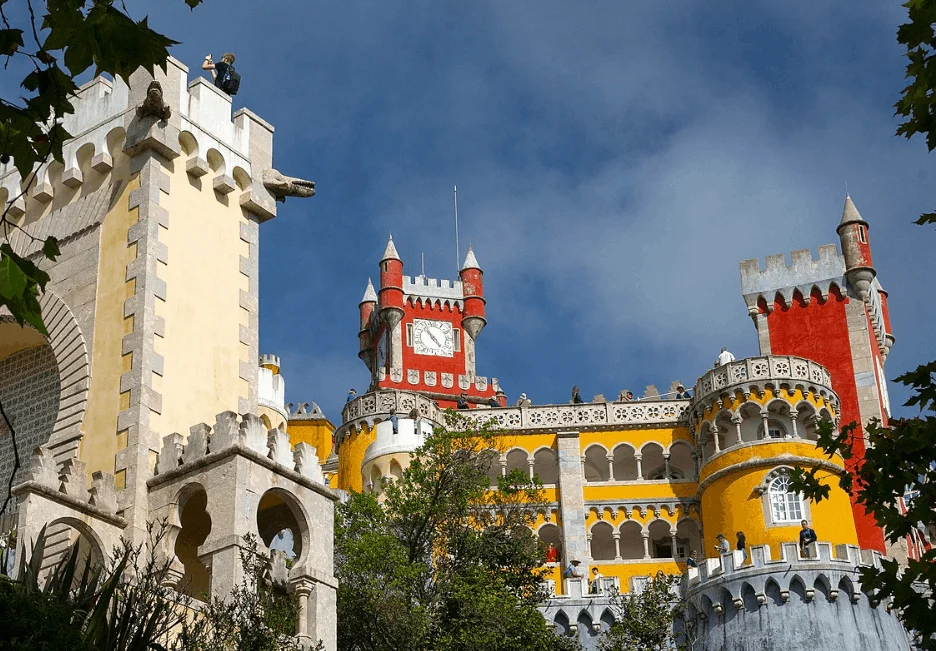
10. The palace has a clock tower and sundial cannon
The remains of the old buildings were preserved and integrated into the palace. These weren’t just the chapel and the monastery but also include the cloister, the dining room, the sacristy, and the Manueline-Renaissance chapel.
In this area, a new section was built which contains a clock tower, which was completed in 1843, and a sundial cannon that used to fire a shot every day at noon.
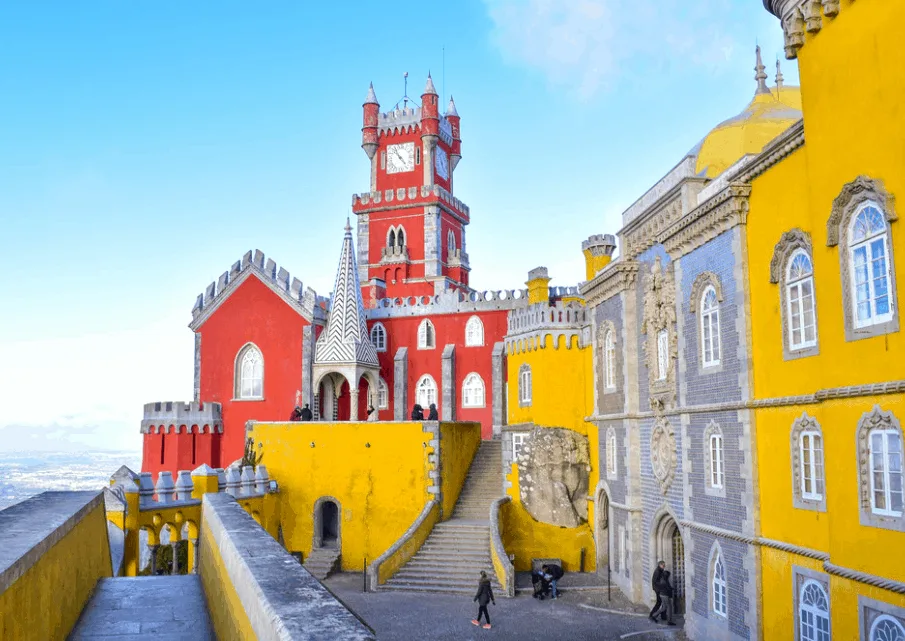
11. The Portuguese State purchased the palace in 1889
Pena Palace was extensively used by the Portuguese royal family as a summer residence. This happened until the Portuguese State bought Pena Palace in the year 1889
After the Portuguese Republican Revolution of 1910, it was turned into a national monument and museum and became one of the most popular tourist attractions in the country.
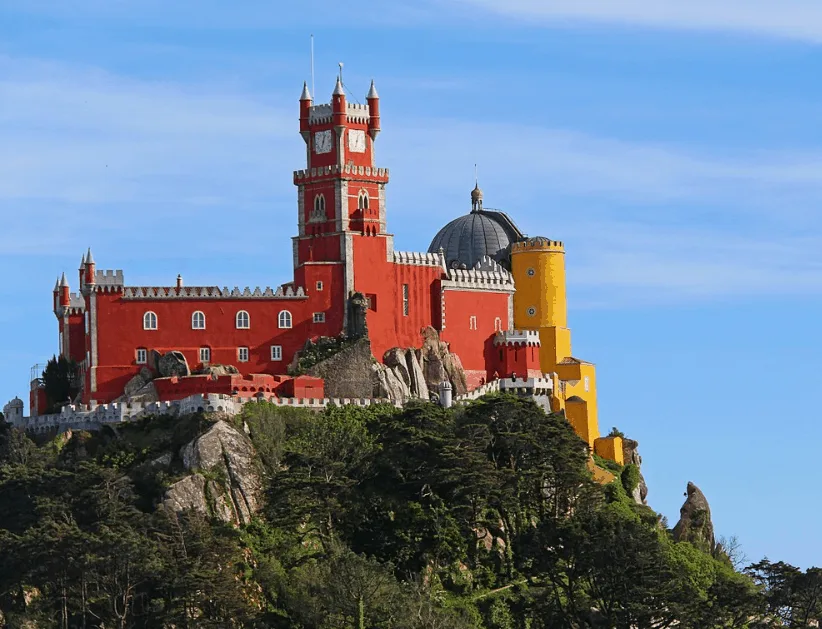
12. Pena Palace is surrounded by an enormous park
The Pena Palace is surrounded by Pena Park which covers an area of about 200 hectares. Since the park is located in the hills it mostly consists of uneven terrain which is covered with plants and trees that were imported from all corners of the world.
Some of these include North American sequoia, Lawson’s cypress, magnolia, Western redcedar, Chinese ginkgo, and Japanese Cryptomeria. The park was created at the same time as the palace, halfway through the 19th century.
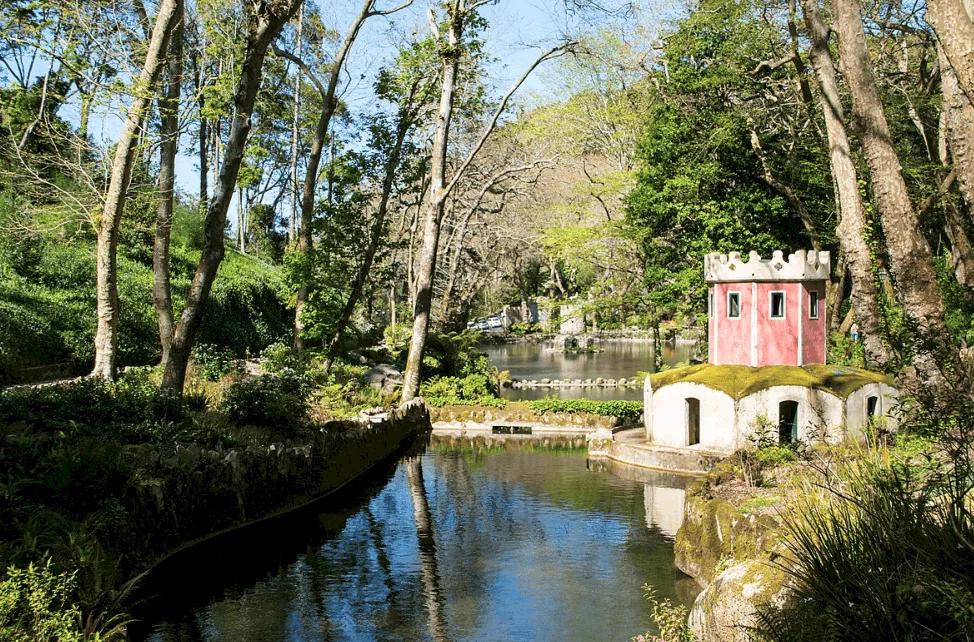
13. It was completely repainted at the end of the 20th century
By the end of the 20th century, the palace didn’t look anything like how it looked during its Romantic glory days of the 19th century. The colors had faded and looked pretty bleak compared to how they looked a century earlier.
That’s why the palace has been completely repainted at the end of the 20th century so the bright colors that you see today are pretty much a replica of how the palace looked just after it was constructed!
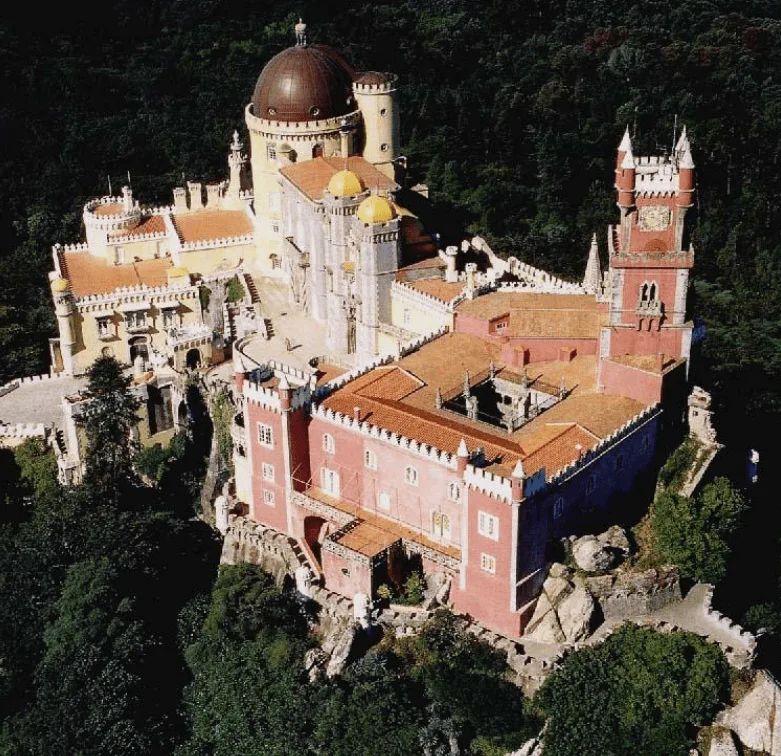
14. Pena Palace is a UNESCO World Heritage Site
Pena Palace is one of the unique treasures in the country, hence it has been declared as one of the 7 Wonders of Portugal. It’s so amazing that it’s even being used for state occasions by the President of the Portuguese Republic and other government officials.
It’s no surprise then that the palace has been classified as a UNESCO World Heritage Site, together with the rest of the Cultural Landscape of Sintra, in the year 1995.
Every year, over 3 million people visit the palace and the National Parc it’s located in!
